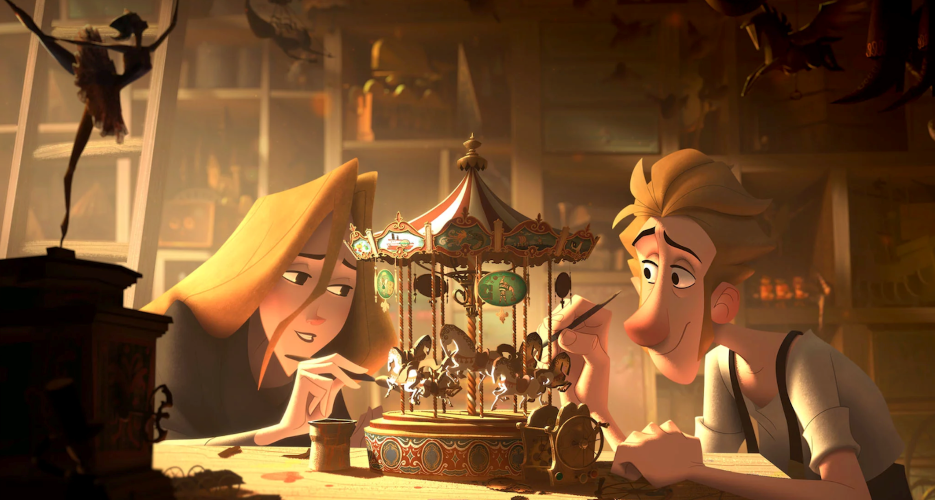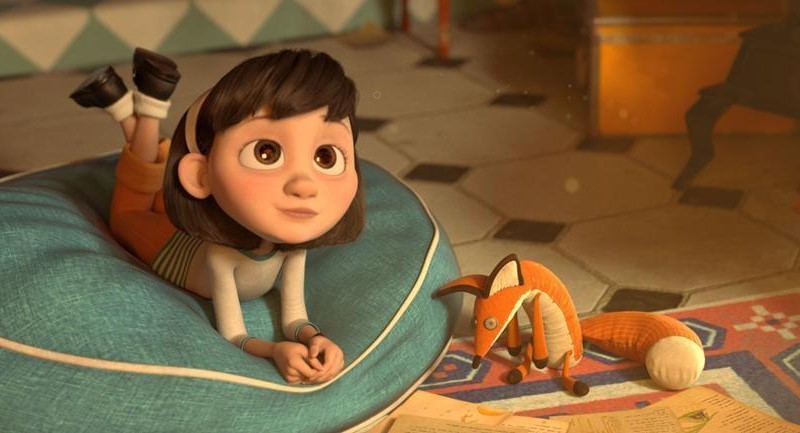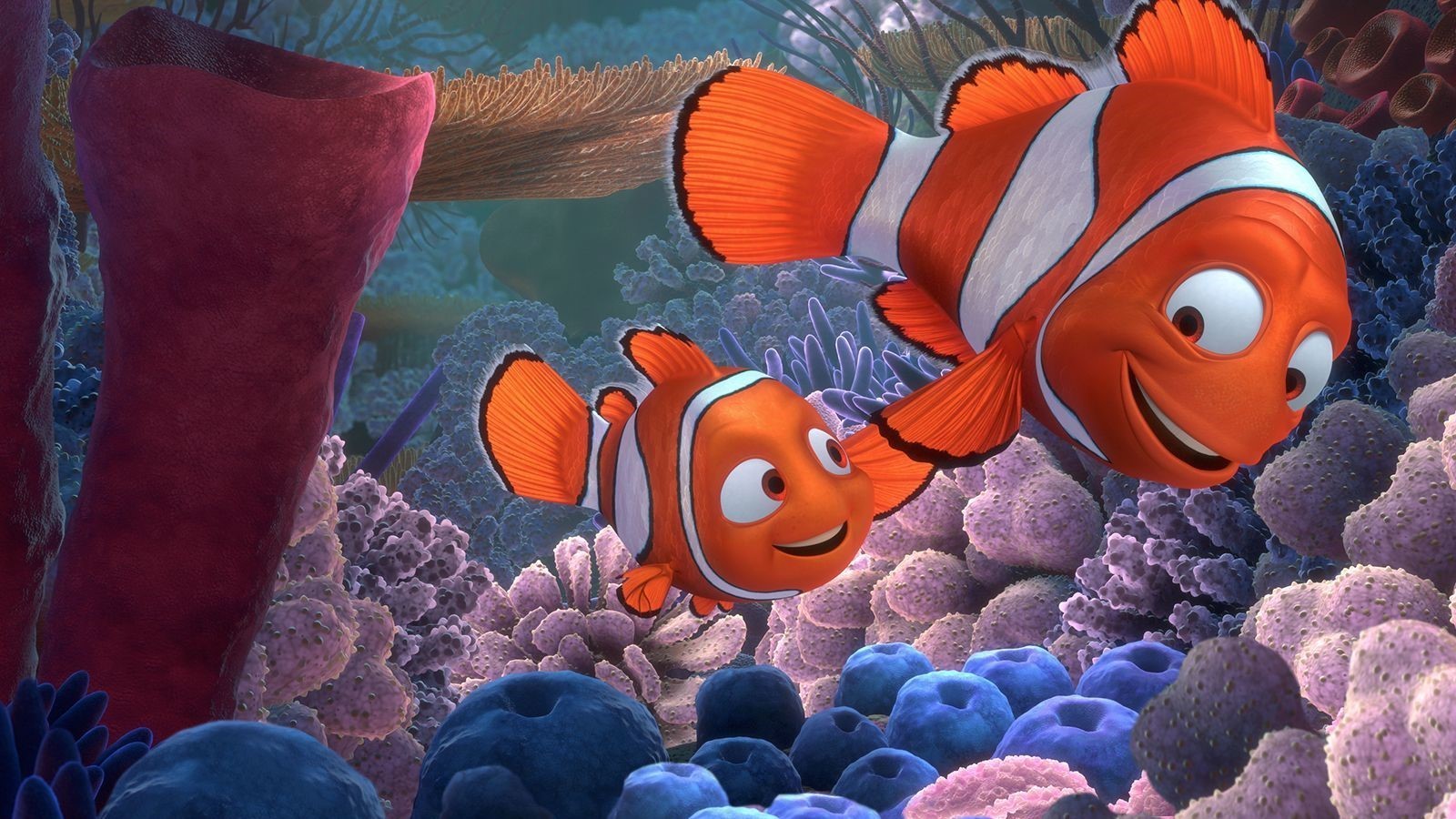Animation Conversations: Adjunct Assistant Professor Jinko Gotoh '82

Animation Conversations is an interview series with Film faculty, students, and alumni where we discuss working as screenwriters, directors, and producers in the animation industry.
To start off the Spring 2022 semester, we sat down with Adjunct Assistant Professor and Film Program Alumna Jinko Gotoh ’82.
Jinko Gotoh is an Oscar-nominated producer and consultant for the animation industry. Her strengths and passion include the discovering and nurturing of diversified and creative talent, and charting new technologies and creative processes. Gotoh is currently producing Escape from Hat, her second animated feature for Netflix, with Academy Award nominee Mark Osborne directing. Her other producing screen credits include: 2020 BAFTA winner and Oscar-nominated Klaus (2019), The Lego Movie 2: The Second Part (2019), The Little Prince (2015), Oscar-nominated The Illusionist (2010), 9 (2009), and Oscar-winning Finding Nemo (2003). Gotoh is devoted to advancing women and all under-represented people in the industry. She serves as Vice President for Women in Animation. She is a member of the Academy of Motion Pictures and Sciences representing diversity and inclusion on various committees. She also co-chairs the PGA Animation and VFX Committee. Beyond that, she is the co-president for Symphonic Jazz Orchestra, which provides K-4 music education to underserved neighborhoods. She holds a Bachelor of Science in Applied Math and MFA in Film from Columbia University. Gotoh is also a published poet and the happy rescuer of many, many dogs.

Tell us a little bit about yourself.
Jinko Gotoh [JG]: I was born in Japan, and we immigrated to the States when I was eight. I grew up in Pasadena, California and for undergrad went to Columbia University’s engineering school, where I got my degree in applied mathematics. My junior year there, they offered a computer graphics class. I’ve always been a big fan of animation ever since the first film I saw, which was Lady and the Tramp when I was a little kid in Japan. But being a typical immigrant family, my parents were looking for their kids to be doctors and lawyers and the like. I never saw film as a career or an option, but when I took the computer graphics course, it made me think, “Wow, maybe there is a possibility that I could go into film.” I was very active with the student film club at Columbia and we started a film magazine while I was there. Right before I graduated, I managed to get a job as a senior programmer for a professor that was practicing computer graphics at Columbia, and that allowed me to go to graduate school at the Film Program for free.
What was your experience in the Film Program like?
JG: I received my MFA from the Film Program in 1982. It was my first step towards trying to create a career path for myself in film. I was fortunate, because I am bilingual, I was able to make a documentary film in China for my thesis film. The film played the festival circuit and did quite well. My dad was very proud of me and wanted to help get some press around me—he knew a lot of press people in Japan because he was working back and forth between Japan and China at that point. I did some press in Japan and was talking about my passion for animation and computer graphics. That led to a lot of meetings and interviews, and I was eventually hired by Dentsu, which, at the time, was the world’s largest advertising agency, where I was hired as an agency producer. The managing director of the agency became my mentor, and when I talked to him about my dreams, he responded by introducing me to so many people. All of this led me to setting up my own production company when I was 27 years old.
Wow! That is so amazing.
JG: Back then, when I was 27…you know, you think you can conquer the world and do all these things and nothing will stop you. But today, when I think about it, I realize that was pretty crazy. However, what I quickly learned was that I didn’t really want to make commercials. That’s not the reason I got into this business. That’s not the reason I went to film school. But it was a means to an end. I could also see the commercial business really changing, where we saw music videos start to make a presence for themselves. I would go pitch to creative directors and suggest using American music video directors to make these commercials. They thought it was a great idea, and I got to work with some of the top music video directors back then, who have now become big feature film directors.
One summer, I was back in New York working. One Sunday, after working a six-day week, I found myself at Radio City Music Hall watching Roger Rabbit. I sat there and thought, “What on earth am I doing sitting here making commercials?” That made me realize I had to find a way to get myself out of the commercial business.
What did you do?
JG: Because I was an agency producer, I had gotten to know all these reps that worked for these computer animation companies. One of my dear friends, who was a rep for a lot of these companies, one day called me to tell me they needed a producer. They had a client and needed to get this project out, which was a direct-to-home-video project, Mortal Kombat. She knew I wanted to get into animation, and I thought I could juggle that with my commercial projects. Eventually, that led me to finding out about Space Jam, which was going to be produced by the same team who did Roger Rabbit. I wanted to be part of that. And I was hired as the CG [computer graphics] Producer for Space Jam.
What was diving into that role like?
JG: On Space Jam, we made stuff up as we went along. We had moved from the world of optics to digital. We made this movie happen, and it’s funny, because now I have people working for me who tell me that their favorite movie growing up was Space Jam. That experience really set me on the career path that led me to the next film and the next.
You’ve had such an amazing career. You’ve worked for powerhouses like Disney and Pixar, just to name a few. How do you approach your work?
JG: I’ve been very fortunate in that I can pick the projects I want to work on. It became really important to me to work with directors to tell stories that mean something. That’s what I’ve been doing for the past ten years or so now. I’m also really trying to support the next generation, especially in terms of gender justice and the underrepresented and BIPOC communities. Since 2013, I’ve really been thinking a lot more about how fortunate I have been and how I want to spend the next chunk of my life, while making movies, finding ways to give back and carve pathways for the next generation.
One of the things I’m doing right now is working with the Department of Education in the state of California to create alternate career pathways for 16-24 year olds who cannot afford to go to a four year program for animation, digital effects, and gaming. It’s a way to create a pathway for more underrepresented storytellers in Hollywood. That has been really interesting and rewarding work.
You’re also the Vice President of Women in Animation. Tell us about that.
JG: Women in Animation has been around for a while now, but it relaunched in 2013, which is when I became involved with the organization. We are committed to creating gender parity, which has become gender justice, because gender is not binary. It’s been tremendous work, and we went from having 100 paid members to now having over 4,500 paid members. We’re able to do programming all around the globe. With the COVID-19 pandemic, we also pivoted towards virtual programming, which has allowed us to be truly global. One of the things we are very proud of is our mentoring program.
What is that?
JG: It started out as a one-on-one mentoring program. One of our board members who has done a lot of research in mentoring said in order for mentoring to work, a mentor and mentee must commit to each other, meaning it can’t be random. We created a platform that allows mentors to signal what they are passionate about, and then mentees have the chance to see that information and apply based on their own interests and goals. It allowed us to create these commitments between mentors and mentees that aligned their interests. From there, I also wanted us to expand to creating mentoring circles, because the other important thing about supporting women is the need for a community. I thought, let’s create that community. Now, mentors take on anywhere from 8-12 mentees, and the mentees now comprise a community outside of work that is a lifelong support system. With the pandemic, we expanded so that mentors could have mentees from anywhere in the world.
I mentored a production assistant who wanted to be a story artist in animation. She came in early every morning to draw and train. A job came up and I encouraged her to apply, and she ended up getting that job and becoming a story artist at Netflix. She asked me how she could ever pay me back, and I said, “Become a mentor!” Last year, she mentored 8-10 people who all wanted to be story artists. One of the beautiful stories that came out of that was about a young woman who never thought she could be a story artist. She was from the Midwest and had never gone to animation school. She had learned to draw on her own. She joined the mentoring program, and through the program, she built up her portfolio and got a job as a story artist at Pixar. It’s been so exciting to see how we can help people.
Do you have a favorite animated work that’s been an important touchstone for you?
JG: Animation-wise, Lady and the Tramp had a huge influence on me, as well as the series Astro Boy, created by Osamu Tezuka, which had a big impact on me as a child. I’m a big fan of Wes Anderson films—there’s such a whimsical factor to his films alongside the poignant things he has to say. I’m so appreciative of the films that have come out recently, especially from Asian filmmakers, like Shoplifters, Parasite, and Minari…these kinds of films that didn’t exist when I was growing up. We’re at this point where a film like Parasite is truly universal and Squid Game has become the most-watched content on Netflix. It’s phenomenal that we’re starting to see that happen. We have to become more empathetic to the world. When we tell our stories, they need to relate to everyone and all people. Each person’s story, as long as it is authentic, should relate to each other.
Image Carousel with 3 slides
A carousel is a rotating set of images. Use the previous and next buttons to change the displayed slide
-
Slide 1: Still from 'The Little Prince'
-
Slide 2: Still from 'Lego Movie 2'
-
Slide 3: Still from 'Finding Nemo'

Still from 'The Little Prince'

Still from 'Lego Movie 2'

Still from 'Finding Nemo'